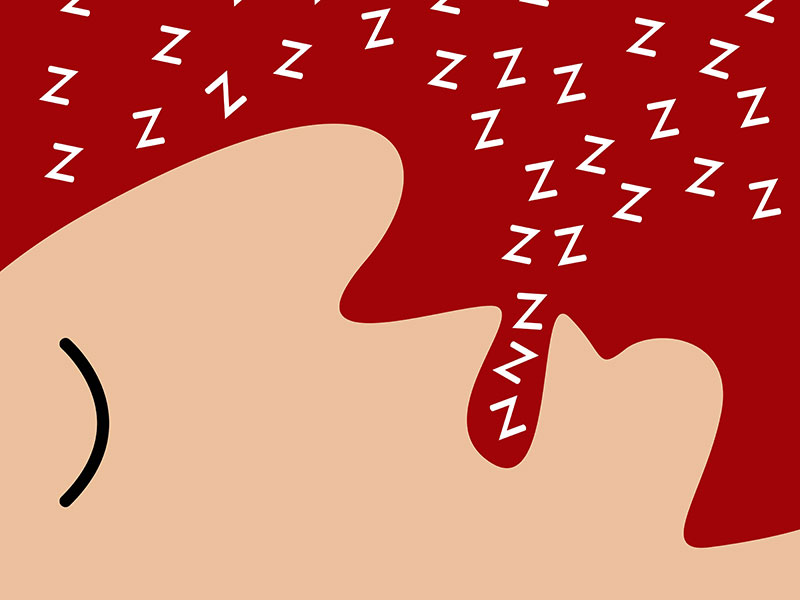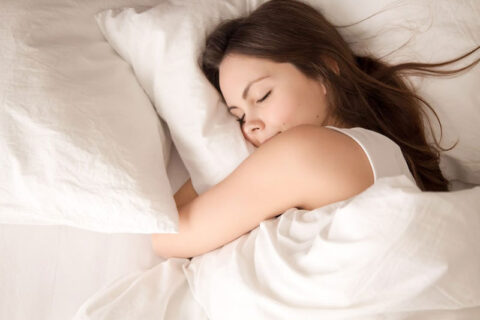Top 5 Sleep Apnea Myths: Busted!

Only men get sleep apnea. Only overweight people get sleep apnea. Sleep apnea is no big deal. Kids outgrow sleep apnea.
Have you heard these statements about sleep apnea? We’ve listened to them all and then some, so we thought it would be a good time to write a blog addressing some of the most common misconceptions out there about this sleep-breathing disorder. Read on!
What Is Sleep Apnea?
Sleep apnea is a condition in which breathing stops during sleep. Sleep apnea can be caused by a malfunction in the part of your brain that controls breathing during sleep, but in most cases, it’s caused by a physical obstruction to your breathing. For many individuals, this obstruction occurs when the throat muscles relax and collapse into the airway, cutting off the airflow, or when the tongue falls back to block breathing.
Sleep apnea is a serious condition; not only does it impact the quality of your sleep, but it can also mean an increased risk of obesity, diabetes and metabolic syndrome, as well as cardiac conditions like an increased risk of heart attack, stroke and high blood pressure. Other dangers of sleep apnea include an increased risk of dementia and Alzheimer’s disease. Many individuals living with sleep apnea also experience liver and kidney issues, depression, and mood swings, and face a higher risk of being involved in a vehicle accident due to fatigue.
Sleep Apnea Myths
Myth No. 1: Sleep apnea happens because of obesity.
No, it doesn’t. While being overweight or obese can increase your risk of developing obstructive sleep apnea because of increased pressure on the upper airway caused by extra fatty tissue on the throat, weight is not the only factor in developing OSA.
Many thin people can develop sleep apnea if their airway is narrow or if they have physiological or structural jaw abnormalities, enlarged tonsils and adenoids, a deviated septum, a tongue that falls back to block the airway muscles, or soft tissues of the throat collapsing to cut off air.
Myth No. 2: If you snore, you have sleep apnea.
While snoring is a potential sign of sleep apnea, it’s not the only sign, and snoring does not mean you have a sleep breathing disorder. It can be a warning sign, but other symptoms of the condition include:
- Excessive daytime sleepiness
- Insomnia
- Gasping or choking for breath
- Interruptions in breathing
- Mouth breathing
- Depression, irritability and mood swings
- Waking up with a dry mouth or dry throat
- Difficulty concentrating
So, while snoring is not the only symptom, it’s worth a check. Sleep apnea has been linked to a higher occurrence of type 2 diabetes, Alzheimer’s disease and cardiac conditions.
Myth No. 3: Sleep apnea means less sleep.
Also not true. Many people living with obstructive sleep apnea sleep seven to nine hours a night. The thing is they’re not getting restful or restorative sleep. If you have obstructive sleep apnea, your body continues to wake up over and over again during the night, and you never hit the deep stages of sleep your body needs to repair its organs and tissues.
Myth No. 4: Children don’t get sleep apnea.
Actually, kids get sleep apnea, just like adults do. Unfortunately, it is often overlooked in children or its symptoms are misdiagnosed. This misdiagnosis happens because the effects of OSA in children often present themselves as behavior disorders, like aggression, attention deficit disorder or even depression and anxiety.
Children can and do get sleep apnea. In fact, around 33 percent of children who are obese are affected. Between 2 and 4 percent of non-obese children develop the disorder.
Another risk factor for kids: Enlarged adenoids and tonsils. These are frequently a problem in childhood and adolescence and can cause interruptions in breathing during sleep.
Don’t kids grow out of sleep apnea, though? Some do, but most do not, which means these kids continue to be misdiagnosed or never get diagnosed even into adulthood.
Myth No. 5: Only men get sleep apnea.
While men do have a higher occurrence of sleep apnea than women, women can also develop the sleep breathing disorder, particularly as a consequence of menopause.
Myth No. 6: CPAP machines are the only treatment option.
Some people shy away from using a CPAP machine because they feel it will make them look unattractive to their sleep partner. Other CPAP wearers report they don’t like the devices, which are designed to force air into your airway to prevent breathing interruptions, because they’re loud, uncomfortable and make many people feel claustrophobic. But there are alternatives!
If you’re one of those people who don’t like your CPAP because you think it makes you look unattractive or it’s uncomfortable, we offer an alternative to the CPAP to help keep you breathing through the night. Our oral appliance therapy is quiet, comfortable and, dare we say, good looking.
Ready to learn more about how we treat sleep apnea? Give us a call today to schedule a consultation.


